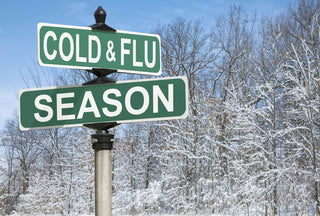People always tell you to take mega doses of vitamin C when you feel a cold or the flu coming on. But while vitamin C is great for a lot of things, the proof just isn’t there when it comes to preventing respiratory illness.
Instead, a new study that analyzed data on over 11,000 patients around the world found that going one letter over to D – yes, vitamin D – could help reduce your risk of an upper respiratory infection by up to 12 percent.
People who were deficient in vitamin D benefitted even more. Their chances of getting sick were cut in half – an important finding because many of us don’t get enough vitamin D to begin with, and especially during the cold winter months when outdoor time and sun exposure, which helps the body produce vitamin D naturally, is reduced.
The researchers note that this vitamin plays an important role in immune function, activating T cells that kill pathogens like bacteria and viruses.
They also suggest that taking a daily or weekly vitamin D supplement might be more effective than even the flu vaccine, preventing one out of every 33 people from getting sick versus one out of 40 who are vaccinated.
How Much Vitamin D Do I Need?
In 2010, the Institute of Medicine (IOM) updated the Recommended Dietary Allowance (RDA) for vitamin D to 600 IUs for most adults and 800 IUs for adults over 70, with an upper intake level of 4,000 IUs.
More About Vitamin D on the Wellness Blog
How Can I Boost My Vitamin D Intake?
If you live in a climate where there’s less sunshine or if you spend the majority of your time indoors, you’re likely to be deficient in vitamin D. Over the past 20 years, men have also seen a decline in vitamin D in their bodies, most likely due to gaining weight, drinking less milk, and using more sunscreen.
If you live in a sunny climate and get outdoors for about 20 minutes a day, you might be satisfying the RDA for vitamin D. However, the darker your skin tone, the more time spent indoors, and eating a diet lacking in vitamin D-rich foods means you may still be deficient.
The most common foods that are good sources of vitamin D include cod liver oil (225% RDA), salmon (110%), shitake mushrooms (29% RDA), dairy, eggs (14%), and fortified foods, including milk (10% RDA).
Getting enough vitamin D from food sources is tough, so the best way to ensure meeting the RDA is to augment your diet with a supplement.
Both our Energy Support and Bone Support supplements are formulated with 450 IUs of cholecalciferol (vitamin D). When taken in combination with our Multi-Vitamin & Mineral, the daily intake is 900 IUs, more than meeting the RDA for adults.
At the right levels, vitamin D can stop colds and flu, support bone health, and may lower the risk for certain cancers, cardiovascular disease, diabetes, and other health diseases.
There’s no D-nying – getting enough vitamin D is a great D-fense against getting sick year-round!

